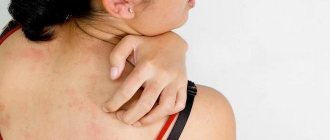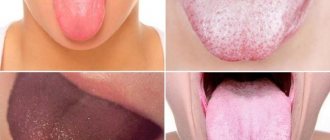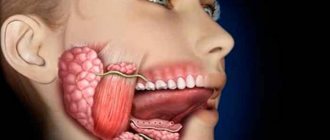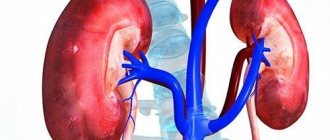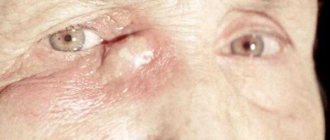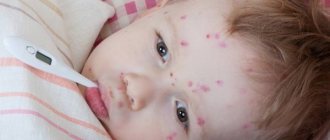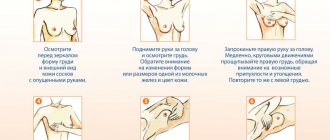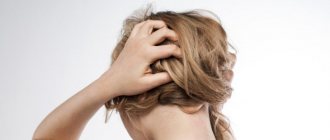The cause of pain in the armpit area is often hidradenitis, an inflammation of the sweat glands. It is provoked by various factors. The development of the disease is often caused by violation of hygiene rules and the use of low-quality cosmetics.
General information
Hidradenitis is a condition in which a purulent inflammatory process in the apocrine sweat glands, which are located in the armpits (usually one-sided inflammation), as well as in the inguinal folds. In rare cases, inflammation appears around the nipples , in the anus , scrotum , and labia majora .
A similar pathology occurs in representatives of all races. However, the most severe forms of the disease occur in people of the Negroid race. Moreover, hidradenitis is diagnosed in both sexes equally often. Inflammation mainly occurs in middle-aged people. To date, there is no data on the influence of hereditary factors on the occurrence of the disease. Very often, hidradenitis progresses in the summer in people who spend a long time in hot and too humid rooms.
The best and most effective antibacterial agents
Among the many drugs used in the treatment of hidradenitis, there are those that are considered the most effective. They quickly and successfully suppress purulent inflammation and are easy to use.
Doxycycline
The active ingredient is doxycycline hyclate. It has a bacteriostatic effect. Compared to other tetracycline antibiotics, it has a significantly less negative effect on the intestinal flora. In addition, it is better absorbed and lasts longer.
In terms of the degree of antimicrobial activity, Doxycycline is better than natural tetracyclines (biomycin, oxytetracycline and others). The dosage of the drug in the acute phase is 100 mg twice a day. In some cases, a single dose of 200 mg of medication may be indicated on the first day.
The average price of Doxycycline is 15 rubles per package of 10 capsules of 100 mg.
We recommend that you read
The best ointments for hidradenitis with an antibacterial effect;
We solve the problem of excessive armpit sweating.
Amoxiclav
It contains amoxicillin and clavulanic acid. This combination has a destructive effect on the cellular structure of pathogenic microorganisms and fights beta-lactamases - substances that reduce the susceptibility of bacteria to antibiotics. The medicine has a wide range of effects and is effective against many types of gram-positive and gram-negative microflora. Quickly distributed throughout the body. The half-life is up to one and a half hours.
Amoxiclav for oral use is available in the form:
- coated tablets;
- instant pills for resorption;
- suspensions.
For injection, there is a powder on the basis of which a solution is prepared.
The maximum daily dose for adults is 6 g, which is divided into 2-3 doses per day: every 12 or 8 hours, respectively. The average cost of a package of tablets (10 pieces of 250 mg amoxicillin/125 mg clavulanic acid) is 205 rubles.
Ciprofloxacin
A broad-spectrum antibiotic, the pharmacological properties of which are based on ciprofloxacin hydrochloride, which destroys bacterial cells and suppresses protein synthesis. Among the numerous indications for use are infectious lesions of the skin, mucous membranes, internal organs and bones.
The dosage is determined individually, as it depends on many parameters, including the patient’s weight and the type of infection. The daily dose of tablets is divided into 2 doses.
The average price of a package of 10 tablets of 250 mg is 30 rubles.
Modern antibiotics are highly effective and have little harm to the body. With their help, it is possible to quickly and completely cure infectious pathologies, avoid complications and reduce the risk of relapse to zero.
Causes of hidradenitis
The causative agent of hidradenitis is mainly Staphylococcus aureus . Passing through the mouth of the hair follicle , staphylococcus ends up in the excretory duct of the apocrine glands . Factors that provoke the development of hidradenitis, as a rule, are a weakening of the body in general, a state of increased sweating, as well as an alkaline reaction that occurs in the armpits, anus and groin. As a rule, such manifestations arise due to ignoring the rules of general hygiene, when receiving microtraumas or cuts. Also, the disease can occur due to scratching after dermatoses , causing itching, in those who suffer from endocrine disorders of a nervous nature (this could be dysfunction of the gonads , diabetes ). Decreased local resistance may also predispose to the development of the disease. Apocrine sweat glands develop only during puberty, and in girls this happens earlier than in boys. Female representatives have more such glands than males. The older a person is, the faster the functions of these glands fade away. In view of this, hidradenitis is an uncharacteristic disease for older people.
Also, risk factors for the development of this disease are immunosuppressive conditions , the use of hair removal products , obesity , and secondary bacterial infection .
Side effects
Antibiotics are drugs, before using which you need to study the list of contraindications and side effects.
Adverse reactions usually encountered are:
- children;
- aged people;
- persons who have kidney, liver dysfunction, gastrointestinal diseases;
Complications can occur due to long-term use of medications and when the dosage is exceeded. Individual hypersensitivity is another contraindication to the use of antibiotics.
Symptoms of hidradenitis
At the very beginning of the disease, during palpation, the specialist discovers small dense nodes located singly. They are found in the dermis or hypodermis . At this stage of the disease, a person feels relatively little pain in the area of nodule formation. The disease progresses, the nodes relatively quickly become larger in size, and they become fused with the skin. Later they take on a pear-shaped shape, standing out in the form of nipples. The patient's skin becomes red-blue, tissue swelling occurs, and the localization of the disease becomes very painful. Sometimes isolated nodes begin to merge into one common lesion, fluctuation , and later they are opened randomly, and pus is released, in which blood impurities are found. During the development of the disease, the formation of a necrotic core . infiltrate may occur . In this case, a person feels pain not only during movements, but also at rest. As a result, the patient loses his ability to work and feels constantly unwell.
Basically, in the process of maturation of hidradenitis, general malaise manifests itself, the patient’s temperature gradually rises, and the pain becomes more intense. After the nodes are opened, the feeling of tension and pain gradually decreases. A few days later, scars form on the ulcers. If an infiltrate occurs during an illness, it will take a longer period to resolve. But even after the symptoms decrease, the disease often relapses, so hidradenitis continues for quite a long time. unilateral develops in the armpits . Although in some cases the disease can be bilateral . On average, hidradenitis lasts about 10-15 days, but with relapses of the disease its course is longer. The latter applies to obese people who complain of hyperhidrosis and diabetes . People who do not carefully monitor body hygiene are also susceptible to relapses of hidradenitis.
Stages and forms of hidradenitis
Depending on the course, hidradenitis is divided into acute and chronic. According to the severity of the course - light, medium and severe.
Forms
- Acute or purulent . The patient's condition is serious, accompanied by low-grade fever and pain in the affected area. The inflammatory process develops quickly and without proper treatment threatens a person’s life.
- Chronic . Basically, this is a repeated process that occurs either with poor quality treatment or with a weakened immune system. The inflammation is long-lasting, but the condition is not as severe as in the acute form. Exacerbations of chronic hidradenitis occur periodically. In the absence of treatment, the area of infiltration grows.
- Nodal form . Often its cause is the entry of the pathogen into damaged areas of the skin (when shaving with an old or someone else's razor, due to insufficient hygiene). A knot is formed that easily turns into an acute form.
Stages
Based on the form and stage of hidradenitis, the physician or surgeon prescribes appropriate treatment.
- Formation of the seal. Painful sensations are either insignificant or absent altogether.
- Accumulation of pus. It has a creamy consistency and yellowish color.
- Opening the abscess.
Diagnosis of hidradenitis
As a rule, diagnosing hidradenitis is not particularly difficult. Due to the very peculiar localization of the inflammatory process, as well as the picture characteristic of the disease, the specialist, first of all, performs a thorough examination. from boils in the complete absence of a necrotic core. It is also important to distinguish hidradenitis from colliquative tuberculosis . With colliquative tuberculosis, the course of the disease is longer, and the disease begins with damage to the lymph nodes; the person does not feel pain.
Treatment
Treatment of hidradenitis is carried out using both conservative and radical techniques. It is also possible to treat pathology at home using folk remedies. The optimal method of treatment is determined only by a doctor based on a visual examination, assessment of the stage of development of the inflammatory process, as well as test results.
Methods of conservative treatment of hidradenitis are used most often. They are quite effective and can completely cure the pathology. The following medications and procedures are prescribed:
- antibacterial therapy. To effectively treat hidradenitis, you should definitely use antibiotics, since it is this group of drugs that most effectively fights pathogenic microorganisms. Medicines from the tetracycline series, as well as the macrolide class, are usually prescribed. They are prescribed both in tablets and injections;
- Hormonal therapy during the treatment of hidradenitis is also often used, since hormonal drugs can influence various phases of inflammatory processes. Glucocorticoid drugs are administered directly to the site of inflammation;
- specific immunotherapy. The main purpose of its purpose is to stimulate immune processes in the body;
- retinoid drugs;
- local therapy;
- UHF;
- UV irradiation of the skin;
- centimeter wave therapy.
Radical treatment of hidradenitis is indicated if pus with bloody streaks is released from the formation. Installation of drainage will not bring success, since at this stage of development of the pathological process many small abscesses form in the infiltrate. It is impossible to drain all of them and therefore pus will continue to be released.
The essence of surgical treatment of hidradenitis is that, under anesthesia, the doctor makes a deep incision that reaches healthy tissue. Next, not only the purulent contents are removed, but also the infiltrated fatty tissue. After the wound has healed, the patient is prescribed to take antibacterial drugs and undergo physical therapy.
Physiotherapeutic procedures that are prescribed after surgical treatment of pathology:
- infrared therapy;
- photochemotherapy;
- magnetic laser therapy.
Carrying out infrared therapy
Nutrition for hidradenitis
In a set of procedures aimed at treating hidradenitis, it is very important to follow a specially designed diet . Immediately after the onset of the disease, it is strictly forbidden to consume alcoholic beverages, all spicy foods, and spicy seasonings for the next three months. You should eat sweets in limited quantities. Quitting smoking is also very important.
Patients are advised to take multivitamins eat foods containing large amounts of phosphorus , iron , vitamins B1 , B2 , B6 , A , C , E. In addition, it is recommended to take products that have the ability to increase the defenses of the human body. These are sea buckthorn oil, tinctures of ginseng, eleutherococcus, and dry brewer's yeast preparations.
ethnoscience
Hidradenitis can also be treated at home using folk remedies. But it is worth noting that self-medication is not recommended. Any folk remedies can be used only with the permission of the attending physician, and in tandem with conservative therapy. Not all traditional medicine that works for one person will work for another. Their uncontrolled use can only worsen the patient's condition.
Treatment at home begins by providing the patient with complete rest and changing his diet, including foods that contain all the microelements, vitamins and minerals the body needs.
The most effective folk remedies for treating illness at home:
- aloe leaves. They cannot completely cure the disease, but have a pronounced bactericidal effect. Therefore, they are used in combination with other folk remedies;
- fresh celery leaves. They are applied to the affected area;
- fresh plantain leaves. Wash and apply to the inflamed area;
- infusion of sage, chamomile flowers, calendula and eucalyptus.
Folk remedies in the early stages of pathology development can completely eliminate the inflammatory process. But if the formation rapidly increases in size and becomes very painful, you should not self-medicate at home, but immediately contact a medical facility.
Prevention of hidradenitis
The main principle of preventing hidradenitis is considered to be adherence to generally accepted rules of hygiene. Thus, a person’s clothing must necessarily correspond to the temperature and humidity of the air. You should not constantly wear clothes that are too tight.
Overweight people should take measures aimed at normalizing their body weight. It is important to carry out proper hygiene procedures in the muscle cavities every day. The area in which the sweat glands are located should be constantly treated with solutions that have disinfecting properties. However, too frequent shaving of hair in the armpit area can also cause the development of the disease due to the occurrence of small wounds through which infection penetrates. Therefore, this procedure should be carried out only when necessary, and using high-quality shaving instruments.
In some cases, the development of the disease can be triggered by perfumes that irritate the skin. Therefore, low-quality and inappropriate cosmetics and perfumes should be avoided. A healthy lifestyle and maintaining a high level of immunity should also be considered an important preventative measure.
Surgical intervention
For hidradenitis, surgical treatment is necessary when antibiotics are ineffective and the infection spreads to adjacent tissues. In case of acute inflammatory process, the operation is performed under local anesthesia. The lesion is opened, after which the gland cavity is cleared of pus and treated with an antimicrobial solution. To prevent complications of hidradenitis, drainage is left in the wound, which is removed after the infectious process has subsided.
In order to permanently get rid of advanced chronic hidradenitis, which is prone to frequent relapses, doctors recommend completely removing the sweat gland affected by inflammation. During this operation, connective tissue that has formed as a result of frequent inflammation is also cut out. Removal of the affected skin appendage ensures that no pathogenic microflora remains, and opening of hidradenitis is no longer required. A video describing the operation process and the possible consequences of the disease if it is not cured in time is available on the Internet.
List of sources
- T. Fitzpatrick, T. Johnson, K. Wolfe, M. Polano, D. Surmond. "Dermatology" atlas-reference book. Publisher: Praktika, 1999
- Voino-Yasenetsky V.F. Essays on purulent surgery.— M.: Binom Publishing House, 2008.
- Demyanov S.L., Koreyba K.A., Zhirnova L.R. Differential diagnosis of infections of the skin and soft tissues of the axillary areas. Practical medicine. 2011;
- Koreyba K.A., Dobrokvashin S.V., Demyanov S.L. Surgical treatment of chronic fistulous forms of hidradenitis of the axillary areas. Kazan Medical Journal. 2010;
Reviews
Reviews about the treatment of hidradenitis are of a different nature, since in this case much depends on the degree of inflammation and the general condition of the sick patient. In most cases, the prognosis is positive after surgery.
It so happened that there was a little pain in the armpit area, and then the temperature rose sharply. As a result, hidradenitis was opened in the hospital, and I had to lie down for 3 days. This is a very unpleasant thing, so at the first symptoms it is better to see a doctor immediately.
Maxim, Sochi
I also had hidradenitis. It was very painful until it burst. I did rinses and took antibiotics for about 10 days. Now if something starts to bother me, I immediately take action.
Anna, Moscow
Classification
Bilateral hidradenitis affects both armpits, in contrast to the unilateral form of inflammation. In medicine, a classification of diseases according to the nature of the processes is accepted. The following forms are distinguished:
- Acute hidradenitis suppurativa. It is characterized by the rapid development of inflammation and symptoms of intoxication of the body. The disease is difficult to treat and often requires surgical intervention.
- Chronic hidradenitis. It has a protracted course with relapses and periods of exacerbation. Occurs when the body’s defenses are reduced or due to untimely treatment.
Characteristics of the pathology
Children and the elderly do not suffer from hidradenitis. This is due to the fact that the work of the apocrine glands is activated during puberty and fades with the onset of old age.
Changes in a woman's hormonal background.
More than 80% of people who have suffered from hidradenitis inguinalis are women from 17 to 55 years old. Moreover, the largest number of cases occur among teenage girls and women experiencing menopause. This is due to changes in hormonal levels, when a combination of factors appears in the body that contribute to the hyperfunction of the sweat glands, with the risk of their inflammation.
In adolescence, hidradenitis inguinalis often occurs in suppurative form and worries for years, debilitating with pain and discomfort.
For reference. Hidradenitis suppurativa is a chronic inflammation of the skin associated with problems with the sweat glands in the groin and armpit area. It is characterized by a long course, the formation of blisters in the folds of the skin and persistent pain.
The International Classification of Diseases, 10th revision, according to which Russia has been statistically recording diseases since 1999, classifies hidradenitis suppurativa as a pathology of the skin appendages. Its code according to ICD 10 is L 73.2.
Hurley staging system
This system is designed to classify skin pathologies such as psoriasis, acne and hidradenitis suppurativa. The system includes three groups or stages that characterize the skin changes and tissue scarring that occur.
- First stage. Consists in the formation of abscesses, which can be single or multiple, without fistulas or scars.
- Second stage. It is characterized by relapses with the formation of single or multiple abscesses, followed by the formation of fistulas and scars. They can occur simultaneously in different parts of the body.
- Third stage. Diffuse or widespread rashes are detected, as well as communicating fistulous passages along the entire length of the affected area.
More common is the first stage of the disease, which is diagnosed in more than 68 cases out of a hundred of all patients with hidradenitis suppurativa. The second stage is observed in only 28 percent of patients, and the last, most severe third stage accounts for only 4 percent.
Although the Hurley system is convenient for practitioners and easy to use, it is not the only one. It is not able to reflect the features of the septic process and does not take into account the degree of development of erythema and the amount of purulent contents discharged. The very assessment of the patient’s condition in accordance with the three stages is unable to accurately determine the moment when therapeutic treatment should be replaced by surgical treatment.
Sartorius staging system
It is this six-step system that allows you to more accurately assess the condition of a patient with hidradenitis and the severity of the disease itself. This method is able to reflect the number of elements of a skin rash, the distance between existing lesions.
- Pure degree - with the absence of nodes;
- Minimum degree – with single nodes;
- Moderate degree - with the presence of less than five inflammatory nodes without fistulas and abscesses, or the presence of a single active abscess or one fistula without the presence of additional inflamed nodes;
- Medium degree - existing inflammatory nodes in the amount of less than five and one abscess, one active fistula with the presence of one or more nodes with inflammation, or up to ten inflammatory nodes with 2 - 5 fistulas or abscesses;
- Severe degree - with existing active fistulas and abscesses from 2 to 5, and more than ten inflammatory nodes;
- Very severe - with more than 5 abscesses or draining fistulas.
This system is more accurate, it allows you to estimate the number and types of lesions. In the Sartorius staging system, each point is assessed with a certain number of points, after which a general and regional score is obtained. Based on the findings obtained, the direction of further treatment is determined.
Preventive actions
To avoid the development of hidradenitis in the groin area, doctors recommend first of all following the rules of hygiene. You should shower at least 2 times a day, this rule is especially important during hot periods. Another effective preventive measure is the use of loose underwear, which is made of natural fabric. In addition, people are advised to give up smoking and alcohol abuse. It is important to eat properly and balanced, to exclude fatty, salty, fried foods from the diet. The menu recommends focusing on a large number of fruits and vegetables containing vitamins and minerals.
Preparations for topical use
Antibacterial agents are used to treat hidradenitis. Usually these are doxycycline and erythromycin, but other options are possible. Only a doctor can prescribe this or that drug and its dosage after reviewing the test results.
Ointment is used for disinfection
Complications
If hidradenitis is not treated in a timely manner, serious problems may develop. Complications can arise when the body's defenses decrease. When purulent inflammation spreads to the subcutaneous tissue and soft tissues, the following consequences may occur:
- scar formation;
- fistula formation;
- bacterial damage to joints, heart, kidneys.
In its advanced form, hidradenitis can spread the infection throughout the body through the blood with the formation of purulent foci (the occurrence of sepsis). The following complications may develop:
- purulent meningitis (inflammation of the meninges);
- osteomyelitis (damage to bones, bone marrow);
- abscess (suppuration of soft tissues, muscles);
- phlegmon (melting of subcutaneous tissue);
- lymphadenitis (damage to nearby lymph nodes).
